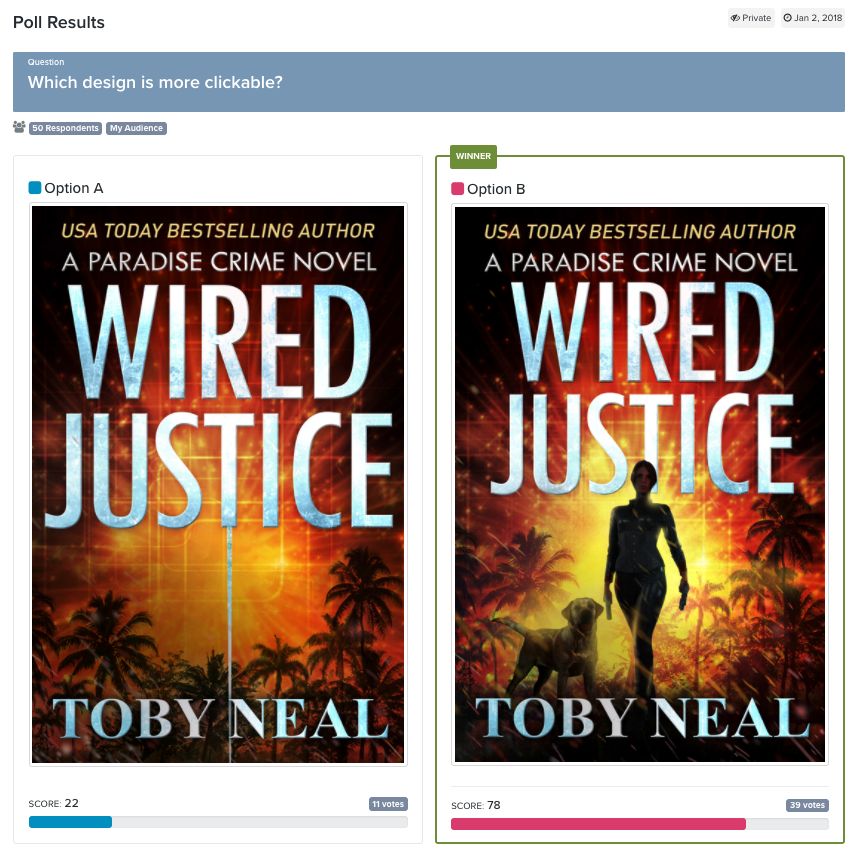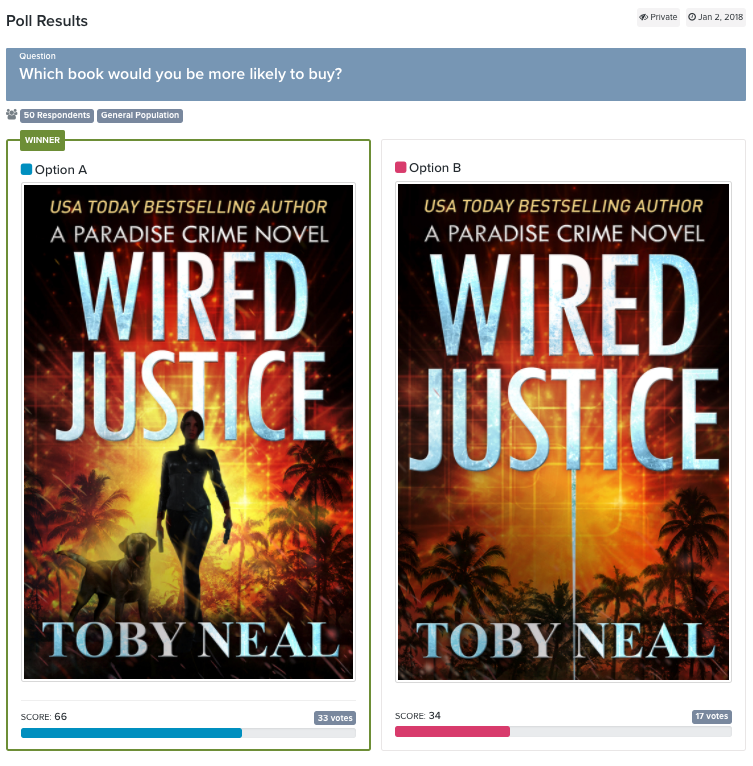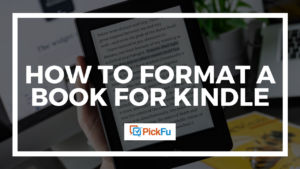When you create a PickFu poll, you have the option to poll your own audience or pose the question to the PickFu panel, a pool of respondents that span many demographic, geographic, and behavioral categories. So which should you choose? Let’s discuss the differences.
Poll your own audience
One of the most attractive features of polling your own audience is you can do so absolutely free.
The process is simple: Create your question, preview your poll, and choose “My Own Audience.” You have the option to ask for respondents’ demographic information and email address, meaning that after your audience votes in your poll, they will also be asked to submit whatever information about themselves that you choose. While this is useful information for segmentation, you may find that the more answers you require, the fewer people participate in your poll. If you choose to include demographic traits, these five will be automatically added: gender, age range, income range, ethnicity, and level of education. You can choose additional traits such as political affiliation, sexual orientation, reading behavior, mobile app usage, exercise habits, and more.
Once your poll is published, it will stay open for two weeks, and you can receive unlimited responses. Simply share the link to your poll on your social networks, via email, or however you communicate with your audience.
One limitation of polling your own audience is that respondents are self-selecting. Because participation in your poll is optional, only your most motivated audience members will click through to answer. Therefore, the feedback you get may be limited to ardent followers or close acquaintances and may not be representative of your customer base as a whole. You should consider this bias in representation when weighing opinions and feedback gathered from your own-audience poll.
Poll the PickFu panel
The PickFu panel is comprised of US-based respondents that are paid to answer your poll questions and have signed a non-disclosure agreement.
The process is simple: Create your question, preview your poll, and choose “PickFu’s Panel.” Then choose how many people you want to respond to your poll. The minimum number of respondents is 50, and depending on your plan, you can poll up to 500. You then have the option to limit respondents to certain demographic filters. For instance, you may only want to poll college-educated women. Each demographic trait will cost additional credits, and you may choose up to three targeting parameters.
Once your poll is published, our panel will start to answer within minutes. Depending on the size of your respondent pool and the options you choose, your poll might be complete in as little as 15 minutes.
One benefit of using PickFu’s panel is they are unfamiliar with your project and come to your poll with fresh eyes. By introducing feedback from people outside of your existing audience, you may gain new perspectives and uncover blind spots in your thinking that may not have been as apparent at the outset of your project.
Why not both?
Why choose? Several PickFu customers have run identical polls with their own audience and with the PickFu panel in order to compare the results.
In one case, a pollster kept his own-audience poll open for three days. In that time, he received only 14 responses. He then ran the same poll using PickFu’s panel and received 50 responses within 32 minutes. The winner was the same in both, though with such a small sample size in the own-audience poll, it’s hard to say with certainty whether the result is reliable.
In another case, author Toby Neal tested two cover designs for her book Wired Justice against each other. She had better luck getting responses from her own audience – she received 50 responses in about two hours by inviting members of a Facebook fan group to participate. She then ran a similar poll with PickFu’s panel and received 50 responses within nine minutes. The winner was the same in both polls.
The familiarity that the own-audience respondents bring was clear from several written comments. Respondents said things like
- “I like that it incorporates Sophie & her sidekick. They are who the book revolves around and I love the idea of them being portrayed on the cover!”
- “Gives a better feel for the storyline”
- “More eye-catching but the dog is wrong breed.”
In some ways, satisfying your existing fan base is smart; you want to keep them happy and engaged with your brand. But there is also value in collecting outsiders’ perspectives in order to widen your book’s appeal.
When the poll was posed to the PickFu panel, comments were more geared toward whether the cover might entice them to buy the book:
- “I would rather buy [Option] A, because it looks to have a protagonist to follow.”
- “I like the image of the woman and the dog. It adds visual interest to it and makes me wonder who the woman is”
- “The person and animal make the story look much more interesting.”
“I liked my original covers, and the books were selling well, but not as well as I hoped,” Neal explained. “I began working on ads to target the audiences of authors with works similar to mine and saw that most of the newer action/adventure mystery thrillers, like mine, had human figures on them: dark men with guns, people running, etc. The PickFu random audience AND my audience of fans… overwhelmingly preferred the image of the woman and dog! So I went ahead and rebranded the entire line of books… It’s too soon to tell how that will affect sales, but I’m optimistic the books will perform even better with the new look.”
The re-designed series of books, using insights from PickFu polling
“My fans responded very similarly to the panel, which surprised me,” Neal said. “I had read somewhere that people usually prefer covers with people on them; I had multiple USA Today bestsellers with my first line of books without people on them, so I didn’t believe it. Now I see that there might really be something to this.”
She added that PickFu is “a quick, easy, affordable way to test a look or concept. I really appreciate the new feature of a free option for my fans to vote on the PickFu site.”
Ready to try it out? Create a PickFu poll geared toward your own audience or PickFu’s panel now!






